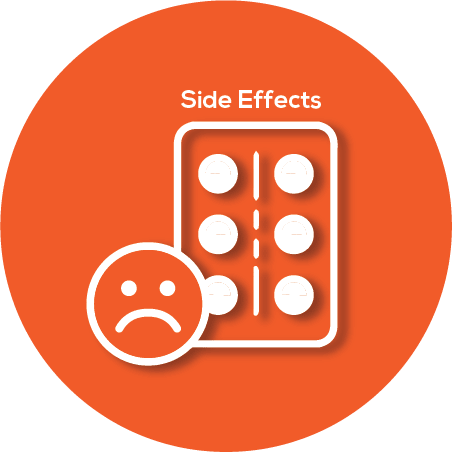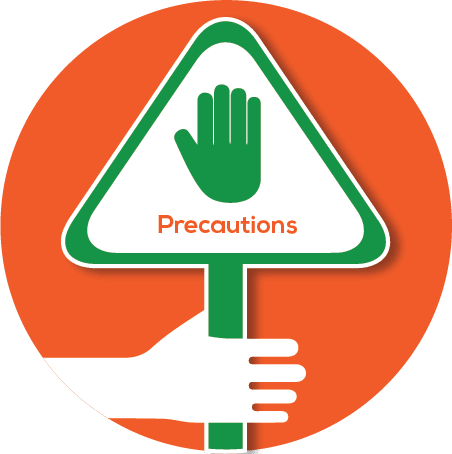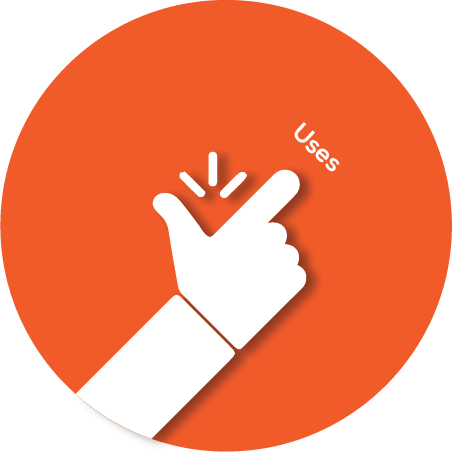Nuragalin D 50mg/20mg Tablets 10s DULOXETINE + PREGABALIN
Introduction to Nuragalin D 50mg/20mg Tablets 10s
Nuragalin D 50mg/20mg Tablets 10s is a combination medication in tablet form primarily used to manage nerve pain, depression, and anxiety. This medicine combines Duloxetine and Pregabalin to provide effective relief from these conditions.
Composition of Nuragalin D 50mg/20mg Tablets 10s
Nuragalin D 50mg/20mg Tablets 10s contains two active ingredients: Duloxetine and Pregabalin. Duloxetine works by increasing serotonin and norepinephrine levels in the brain, which helps regulate mood and pain. Pregabalin calms overactive nerves, reducing pain and seizures.
Uses of Nuragalin D 50mg/20mg Tablets 10s
- Treatment of depression
- Management of anxiety
- Relief from nerve pain
- Control of epilepsy
- Management of fibromyalgia
Side effects of Nuragalin D 50mg/20mg Tablets 10s
- Common side effects: nausea, dry mouth, dizziness, sleepiness
- Serious side effects: liver damage, weight gain, swelling in hands and feet
Precautions of Nuragalin D 50mg/20mg Tablets 10s
Before taking Nuragalin D 50mg/20mg Tablets 10s, inform your doctor if you have liver disease or a history of suicidal thoughts. Avoid alcohol as it can increase drowsiness. Do not stop the medication suddenly to prevent withdrawal symptoms.
How to Take Nuragalin D 50mg/20mg Tablets 10s
Take Nuragalin D 50mg/20mg Tablets 10s orally, with or without food, as prescribed by your doctor. Follow the dosage instructions carefully to ensure safety and effectiveness.
Conclusion of Nuragalin D 50mg/20mg Tablets 10s
Nuragalin D 50mg/20mg Tablets 10s, containing Duloxetine and Pregabalin, is a therapeutic medication used for treating depression, anxiety, nerve pain, epilepsy, and fibromyalgia. Manufactured for effective relief, it is essential to follow medical advice for optimal results. Nuragalin D 50mg/20mg Tablets 10s offers a comprehensive approach to managing these conditions.


Are the medicines in combination of Duloxetine and Pregabalin safe to take together?
Duloxetine, which is a medication used to treat depression and anxiety, and Pregabalin, which is used to treat nerve pain and seizures, can interact with each other. When taken together, they may increase the risk of side effects like dizziness, drowsiness, and difficulty concentrating. Some people may also experience impairment in thinking and judgment. To monitor these interactions, it's important to keep track of any new or worsening symptoms. Regular check-ins with a healthcare provider can help manage these effects. They might adjust the dosage or suggest alternative treatments if necessary. It's also crucial to avoid alcohol, as it can enhance these side effects. Always inform your doctor about all the medications you are taking to ensure safe and effective treatment.

Are there harms and risks from taking combination of Duloxetine and Pregabalin?
Duloxetine, which is used to treat depression and anxiety, can cause common side effects like nausea, dry mouth, and sleepiness. Some people might also experience dizziness or constipation. A significant adverse effect is the risk of liver damage, which means it can harm the liver. Pregabalin, which is used for nerve pain and seizures, often causes dizziness and sleepiness as well. It can also lead to weight gain and swelling in the hands and feet. A serious adverse effect is the potential for allergic reactions, which can cause swelling and difficulty breathing. Both Duloxetine and Pregabalin share common side effects like dizziness and sleepiness. However, Duloxetine is more associated with digestive issues, while Pregabalin is linked to weight changes and swelling. It's important to talk to a doctor if any side effects are severe or concerning.

Can I take combination of Duloxetine and Pregabalin if I am pregnant?
Duloxetine, which is a medication used to treat depression and anxiety, and Pregabalin, which is used to treat nerve pain and seizures, both have considerations during pregnancy. Duloxetine may pose risks to the fetus, especially if taken in the third trimester, potentially leading to complications such as respiratory distress or feeding difficulties in the newborn. Pregabalin's effects during pregnancy are less clear, but there is a potential risk of birth defects. Both medications should only be used during pregnancy if the benefits outweigh the risks. It's important for pregnant women to consult their healthcare provider before starting or continuing these medications. Both drugs share the common attribute of requiring careful consideration and medical advice during pregnancy due to potential risks to the developing baby.

Can I take combination of Duloxetine and Pregabalin while breastfeeding?
Duloxetine, which is a medication used to treat depression and anxiety, has limited data on its safety during breastfeeding. It is known to pass into breast milk in small amounts. Some studies suggest it may cause side effects in breastfed infants, such as sleepiness or poor feeding. Pregabalin, which is used to treat nerve pain and seizures, also passes into breast milk. However, there is even less information available about its effects on breastfed infants. Both medications share the common concern of potential side effects in infants, but the specific effects and the amount that passes into breast milk can vary. It is important for breastfeeding mothers to consult with their healthcare provider to weigh the benefits and risks of using these medications while breastfeeding.

Can I take combination of Duloxetine and Pregabalin with other prescription drugs?
Duloxetine, which is a medication used to treat depression and anxiety, can interact with other drugs that affect serotonin levels, such as certain antidepressants and pain medications. This can lead to a serious condition called serotonin syndrome, which refers to a potentially life-threatening condition caused by too much serotonin in the brain. Pregabalin, which is used to treat nerve pain and seizures, can interact with medications that depress the central nervous system, such as opioids and alcohol, increasing the risk of dizziness and drowsiness. Both Duloxetine and Pregabalin can cause dizziness and drowsiness, so combining them with other medications that have similar effects can increase these side effects. They both require careful monitoring when used with other medications that affect the brain and nervous system. It's important to consult a healthcare provider before combining these medications with others to avoid harmful interactions.

For how long is combination of Duloxetine and Pregabalin taken?
Duloxetine, which is a medication used to treat depression and anxiety, is often taken for several months or longer, depending on the individual's response and doctor's advice. Pregabalin, which is used to treat nerve pain and seizures, can also be taken for extended periods, often as long as the symptoms persist. Both medications are used for chronic conditions, meaning they are typically taken long-term. Duloxetine is unique in its ability to treat mood disorders, while Pregabalin is specifically effective for nerve-related issues. However, both medications can help manage pain, though through different mechanisms. They share common attributes such as the need for gradual dose adjustments and monitoring by a healthcare provider to ensure effectiveness and minimize side effects. It's important to follow a doctor's guidance on how long to use these medications.

How does combination of Duloxetine and Pregabalin work?
Duloxetine works by increasing the levels of serotonin and norepinephrine, which are chemicals in the brain that help regulate mood and pain. It is often used to treat depression, anxiety, and certain types of chronic pain. Pregabalin, on the other hand, works by calming the nerves in the brain, which helps to reduce seizures and relieve nerve pain. It is commonly used for conditions like epilepsy and fibromyalgia. Both Duloxetine and Pregabalin are used to manage pain, but they do so in different ways. Duloxetine affects chemical levels in the brain, while Pregabalin directly calms nerve activity. Despite their differences, both medications can help improve quality of life by reducing pain and discomfort. They are often prescribed for long-term use and require regular monitoring by a healthcare provider to ensure they are working effectively and safely.

How does one take combination of Duloxetine and Pregabalin?
Duloxetine, which is used to treat depression and anxiety, can be taken with or without food. However, taking it with food may help reduce the chance of an upset stomach. Pregabalin, which is used to treat nerve pain and seizures, can also be taken with or without food. There are no specific food restrictions for either medicine, but it's always a good idea to follow a balanced diet. Both medicines share the common attribute of being taken orally and can be taken with or without food. However, they are used to treat different conditions. Duloxetine is primarily for mood disorders, while Pregabalin is for nerve-related issues. It's important to follow your healthcare provider's instructions and report any unusual side effects. Always consult your doctor or pharmacist if you have questions about your medication.

How do I know if combination of Duloxetine and Pregabalin is working?
The benefits of Duloxetine and Pregabalin are measured by their ability to relieve symptoms of certain conditions. Duloxetine, which is an antidepressant, is often used to treat depression, anxiety, and nerve pain. Its effectiveness is assessed by improvements in mood, reduction in anxiety levels, and decreased pain perception. Pregabalin, which is an anticonvulsant, is used for nerve pain, epilepsy, and anxiety. Its benefits are measured by reduced seizure frequency, less nerve pain, and lower anxiety levels. Both medicines share the common attribute of treating nerve pain and anxiety, and their benefits are assessed by symptom relief. However, Duloxetine is unique in its use for depression, while Pregabalin is unique in its use for epilepsy. Both medicines are evaluated through patient-reported outcomes and clinical assessments to determine their effectiveness in managing symptoms.

How do I store combination of Duloxetine and Pregabalin?
Duloxetine, which is used to treat depression and anxiety, does not require refrigeration. It should be stored at room temperature, away from moisture and heat. Pregabalin, which is used to treat nerve pain and seizures, also does not need refrigeration. It should be kept at room temperature, away from light and moisture. Both medicines share the common attribute of being stored at room temperature, which means they should be kept in a cool, dry place. Neither should be exposed to extreme temperatures or humidity. It's important to keep both medications in their original containers and out of reach of children. Always check the packaging or consult a pharmacist for specific storage instructions.

How effective is combination of Duloxetine and Pregabalin?
Duloxetine and Pregabalin are both effective medications used to treat nerve pain, which refers to pain caused by damage to the nerves. Duloxetine is unique because it is a serotonin-norepinephrine reuptake inhibitor, which means it works by increasing the levels of serotonin and norepinephrine, chemicals in the brain that help maintain mental balance and stop pain signals. Pregabalin, on the other hand, is an anticonvulsant, which means it works by calming the brain and nerves to reduce pain and seizures. Both medications share the common attribute of being used to treat nerve pain and certain types of anxiety. They are both taken orally and have been shown to be effective in clinical trials. However, they work in different ways and may have different side effects. It's important to consult a healthcare provider to determine which medication is best for an individual's specific condition.

How long does it take for combination of Duloxetine and Pregabalin to work?
The time it takes for a combination medicine to start working depends on the individual medicines it contains. For example, if the combination includes ibuprofen, which is a pain reliever and anti-inflammatory drug, it typically starts working within 20 to 30 minutes. If it also contains paracetamol, which is another pain reliever, it usually begins to work within 30 minutes as well. Both medicines are used to relieve pain and reduce fever, which means they share these common attributes. However, ibuprofen also reduces inflammation, which is swelling and redness, while paracetamol does not. When combined, these medicines can provide a more comprehensive approach to managing pain and fever, often starting to work within 30 minutes to an hour.

What disease or symptom is combination of Duloxetine and Pregabalin used for?
Duloxetine is used to treat depression, which is a mood disorder causing persistent sadness, and anxiety, which is excessive worry. It also helps with nerve pain, which is pain caused by damaged nerves, often seen in conditions like diabetes. Pregabalin is used for nerve pain as well, but it also treats epilepsy, which is a condition causing seizures, and fibromyalgia, which is a disorder causing widespread muscle pain and tenderness. Both Duloxetine and Pregabalin are used to manage nerve pain, but they work differently. Duloxetine is a serotonin-norepinephrine reuptake inhibitor, which means it helps balance chemicals in the brain. Pregabalin, on the other hand, is an anticonvulsant, which means it helps calm overactive nerves. While they share the common goal of treating nerve pain, their unique attributes make them suitable for different additional conditions.

What is combination of Duloxetine and Pregabalin?
Duloxetine is commonly used to treat depression and anxiety, as well as nerve pain, which refers to pain caused by damage to the nerves. It works by increasing the levels of serotonin and norepinephrine, which are chemicals in the brain that help maintain mental balance and stop pain signals. Pregabalin is used to treat nerve pain, epilepsy, which refers to a disorder where nerve cell activity in the brain is disturbed, and fibromyalgia, which is a condition characterized by widespread musculoskeletal pain. It works by calming the damaged nerves in the body. Both medicines are used to manage nerve pain, but they work in different ways and have unique uses, with Duloxetine also addressing mood disorders and Pregabalin being used for epilepsy and fibromyalgia.

What is the usual dose of combination of Duloxetine and Pregabalin?
Duloxetine, which is used to treat depression and anxiety, usually has a starting dose of 30 mg once daily, which can be increased to 60 mg per day. Pregabalin, which is used to treat nerve pain and seizures, typically starts at 150 mg per day, divided into two or three doses, and can be increased to 300 mg per day. Duloxetine works by increasing the levels of serotonin and norepinephrine, which are chemicals in the brain that help regulate mood. Pregabalin works by calming overactive nerves, which helps reduce pain and seizures. Both medicines are used to treat nerve pain, but they work in different ways. They can both cause side effects like dizziness and sleepiness. It's important to follow a doctor's instructions when taking these medications to ensure safety and effectiveness.

Who should avoid taking combination of Duloxetine and Pregabalin?
Duloxetine, which is used to treat depression and anxiety, can increase the risk of suicidal thoughts, especially in young adults. It may also cause liver damage, so people with liver disease should avoid it. Pregabalin, which is used for nerve pain and seizures, can cause dizziness and drowsiness, affecting the ability to drive or operate machinery. It may also lead to weight gain and swelling in the hands and feet. Both Duloxetine and Pregabalin can cause allergic reactions, so people should watch for signs like rash or difficulty breathing. They can also interact with alcohol, increasing drowsiness and dizziness. It's important to avoid stopping these medications suddenly, as this can lead to withdrawal symptoms. Always consult a healthcare provider before making changes to medication use.













.svg)
